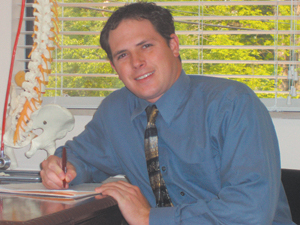A CURE FOR DIABETIC NEUROPATHY
 There are 20.8 million children and adults in the United States, or 7% of the population, who have diabetes. There are two types of diabetes. Diabetes mellitus is a group of diseases marked by high levels of blood glucose resulting from defects in insulin production, insulin action, or both. Diabetes can lead to serious complications and premature death, but people with diabetes can take steps to control the disease and lower the risk of complications.
There are 20.8 million children and adults in the United States, or 7% of the population, who have diabetes. There are two types of diabetes. Diabetes mellitus is a group of diseases marked by high levels of blood glucose resulting from defects in insulin production, insulin action, or both. Diabetes can lead to serious complications and premature death, but people with diabetes can take steps to control the disease and lower the risk of complications.
Types of diabetes
Type 1 diabetes was previously called insulin-dependent diabetes mellitus (IDDM) or juvenile-onset diabetes. Type 1 diabetes develops when the body’s immune system destroys pancreatic beta cells, the only cells in the body that make the hormone insulin that regulates blood glucose. To survive, people with Type 1 diabetes must have insulin delivered by injection or a pump. This form of diabetes usually strikes children and young adults, although disease onset can occur at any age. Type 1 diabetes accounts for 5 percent to 10 percent of all diagnosed cases of diabetes. Risk factors for Type 1 diabetes may be auto-immune, genetic, or environmental. There is no known way to prevent Type 1 diabetes. Several clinical trials of methods for the prevention of Type 1 diabetes are currently in progress or are being planned.
Type 2 diabetes was previously called non-insulin dependent diabetes mellitus (NIDDM) or adult-onset diabetes. Type 2 diabetes accounts for about 90 percent to 95 percent of all diagnosed cases of diabetes. It usually begins as insulin resistance, a disorder in which the cells do not use insulin properly. As the need for insulin rises, the pancreas gradually loses its ability to produce it. Type 2 diabetes is associated with older age, obesity, a family history of diabetes, history of gestational diabetes, impaired glucose metabolism, physical inactivity, and race/ethnicity. African Americans, Hispanic/Latino Americans, American Indians, and some Asian Americans and Native Hawaiians or other Pacific Islanders are at particularly high risk for Type 2 diabetes and its complications. Clinically based reports and regional studies suggest that Type 2 diabetes in children and adolescents, although still rare, is being diagnosed more frequently, particularly in American Indians, African Americans, and Hispanic/Latino Americans. (Copied from diabetes.niddk.nih.gov/dm/pubs/statistics/index.htm#7).
Overall, when you have too much glucose (sugar) in your blood then it causes your blood vessels to constrict. This affects the smaller blood vessels and then moves into the larger ones. This is the reason why people with diabetes often have eye, kidney, brain, heart, dental and extremity problems. There are really two main ways to treat diabetes. For Type 2, diet control and Type 1, insulin. Until the diabetes is controlled, the symptoms will always be there and various other treatments are then included to help with the symptoms. Fortunately, I have come across an awesome new technology called Monochromatic Infrared Photo-Thermal Energy Or Mire™ for the treatment of diabetic neuropathy (numbness/tingling/pain in the hands and feet). This is done using a machine called Anodyne® Therapy. This machine releases light energy into the tissues which is absorbed by red blood cells and initiates the release on nitric oxide. Nitric oxide is a natural vasodilator and helps increase circulation to the area. I have one of these units in my clinic and treat patients for this problem every day. Unfortunately, Medicare has decided to refrain from paying for the treatments. The good news is that I offer a wonderful payment plan and discount to all my Waynedale News readers. Secessions last 3x/week for 1 month. The reason for this is that you get the best exposure to the treatment by keeping them close together, along with being a part of a clinical research program which could help get Medicare to pay for it again. If you or anyone you know has diabetic neuropathy, please have them call the office for a free consultation right away.
Until next time, I am Dr. James P. Nill DC.
Take care and have a healthy day.
If you or anyone you know has any questions or would like to know more of what I can do for you then give me a call to set up your FREE initial consultation. Again, please contact me by phone at 260-459-2205 or by e-mail at drnill@nillfamilychiropractic.com. If you have any questions or if you want to come in for the free consultation, the address is: Nill Family Chiropractic and Wellness Center at 4656 W. Jefferson Blvd., Suite 240, Fort Wayne, IN 46804. Also, feel free to check out our website to see all that we have to offer at www.nillfamilychiropractic.com.
- One Last Delivery After 25 Years Of Dedication To Community News - December 19, 2025
- 400 Kids Enjoy A Festive Afternoon - December 19, 2025
- Local Radio Stations Help Families With ‘Letters To Santa’ - December 19, 2025


